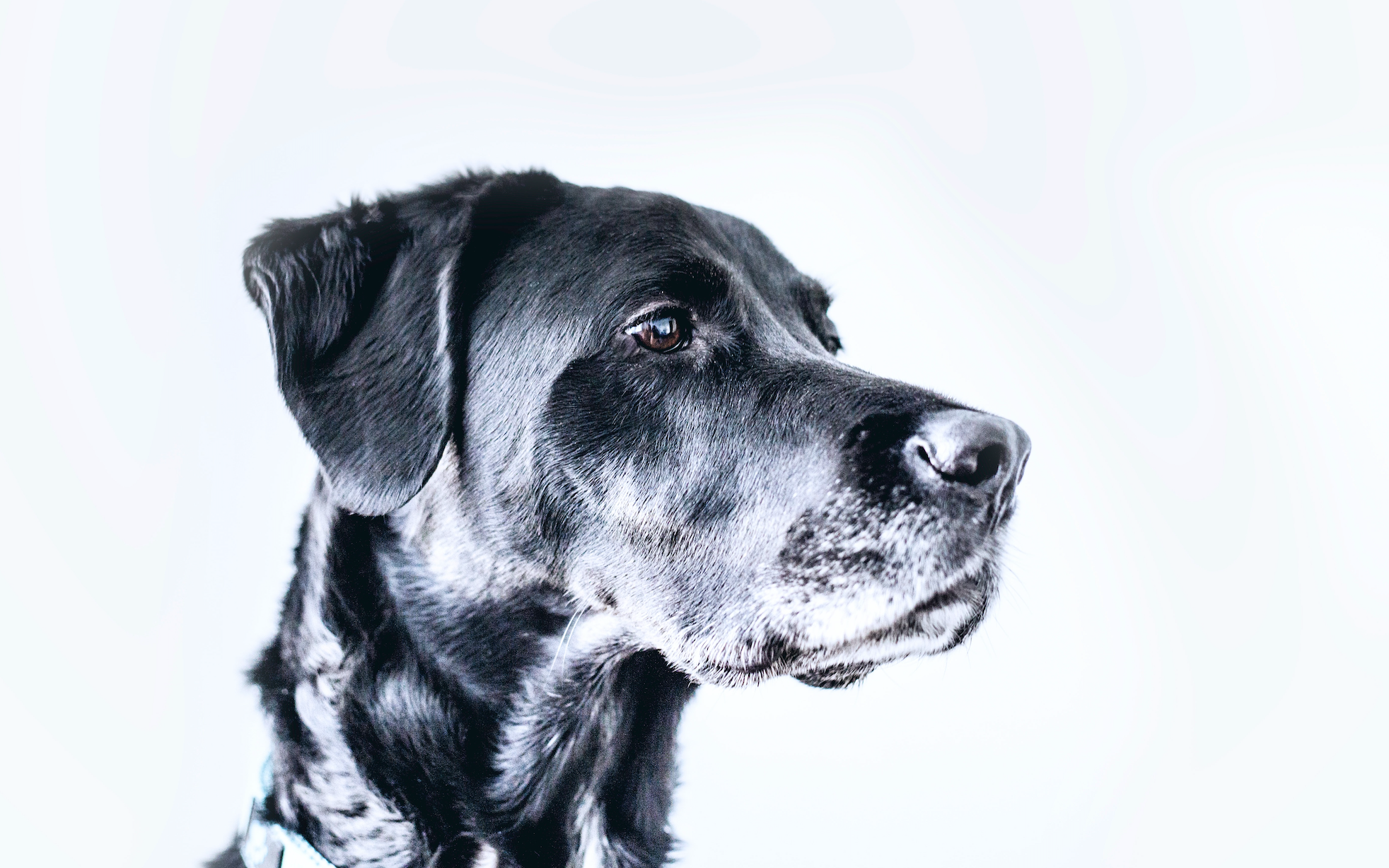Everyone wants network effects. A profile page can be an essential element to this—just imagine Github or Twitter without a profile page. Would people still join?
While it seems simple on the surface, there are tens (if not hundreds) of decisions that drive a profile page that will deliver value to your users, and therefore to your company.
Let’s dig deeper into some of the key choices and the behaviors they create.
1. What can the user control about her profile page? What does the company control? What can other people do via her profile page?
How much of the content of a user’s profile is self-determined? Some platforms, like Instagram, are all about user-generated content. There’s a lot you can control about what shows up there.
How much of the content is passive? Transaction-based sites, such as Lyft and UpWork, tend to include a lot of passive content—there’s a log of user actions and the feedback related to those. The profile page owner doesn’t control this information; it’s generated and placed there by the company and by other users.
Some platforms are all about allowing users to showcase themselves to the “outside” world. In the case of Behance, the profile page serves as your proof of work or portfolio:
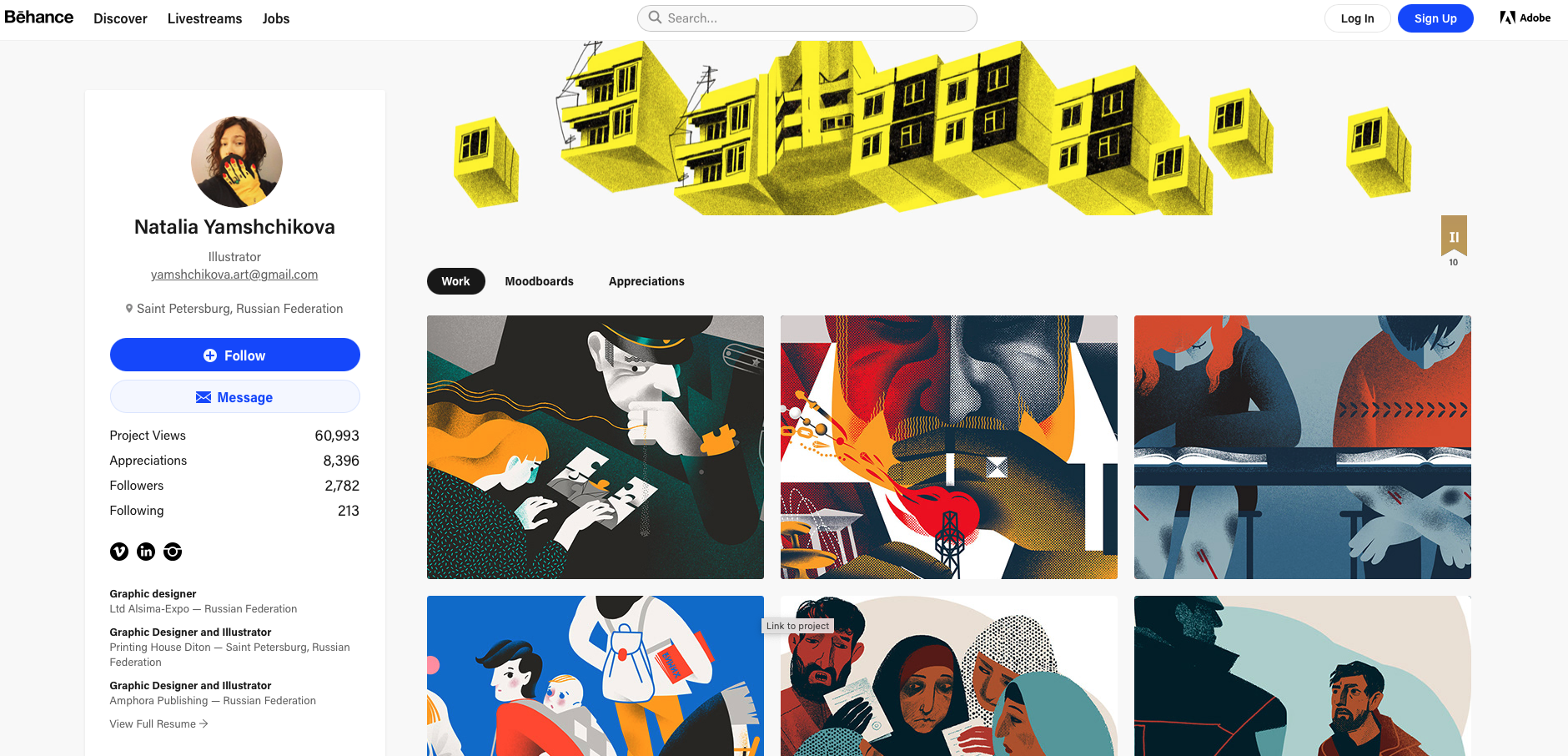
On GitHub, your page is also like a portfolio, but the company automatically adds some cool visualizations of your contribution history:
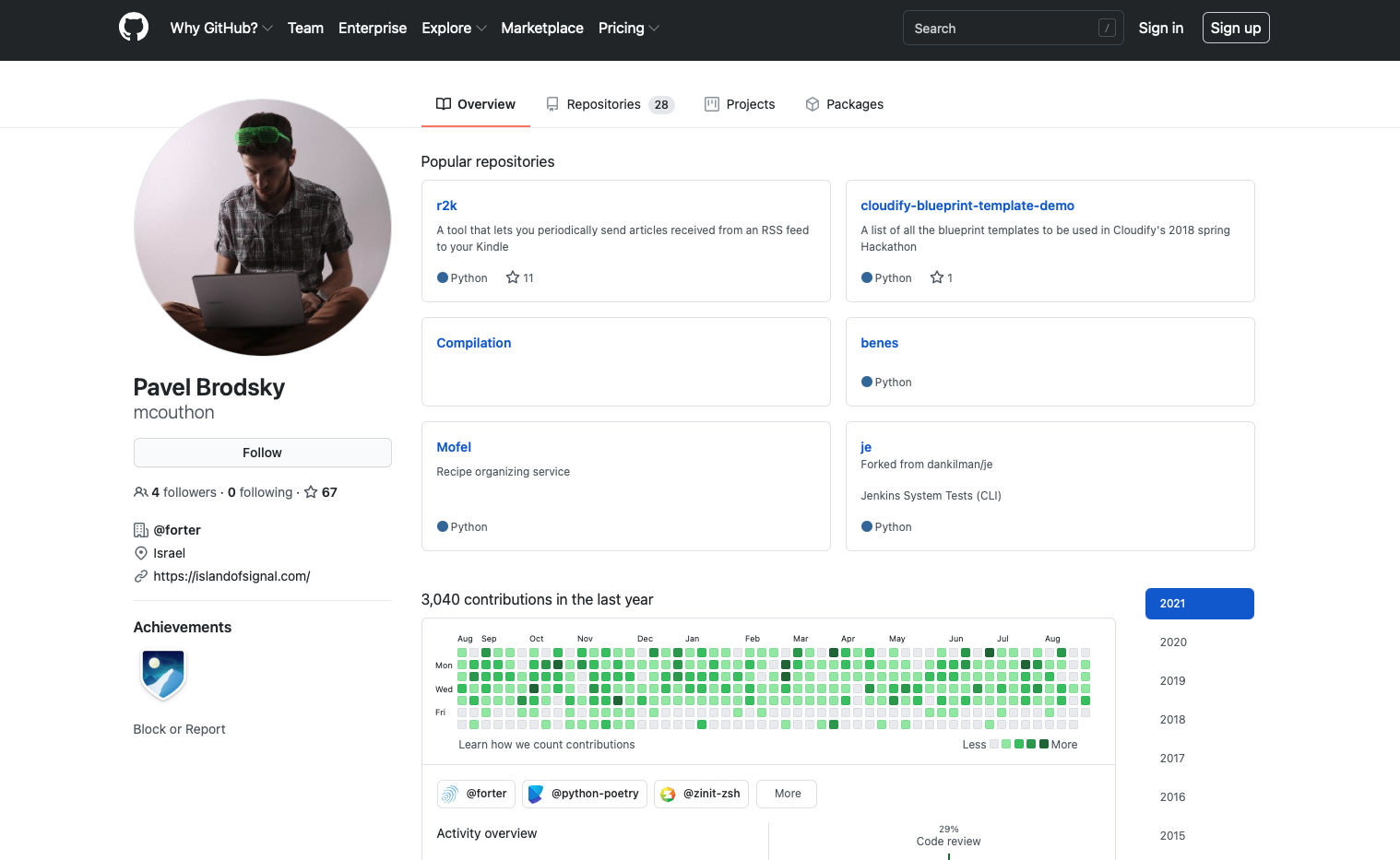
Pinterest is curation vehicle. It’s not a portfolio of your own creations, but it allows users to curate their choice of images and content from around the web:
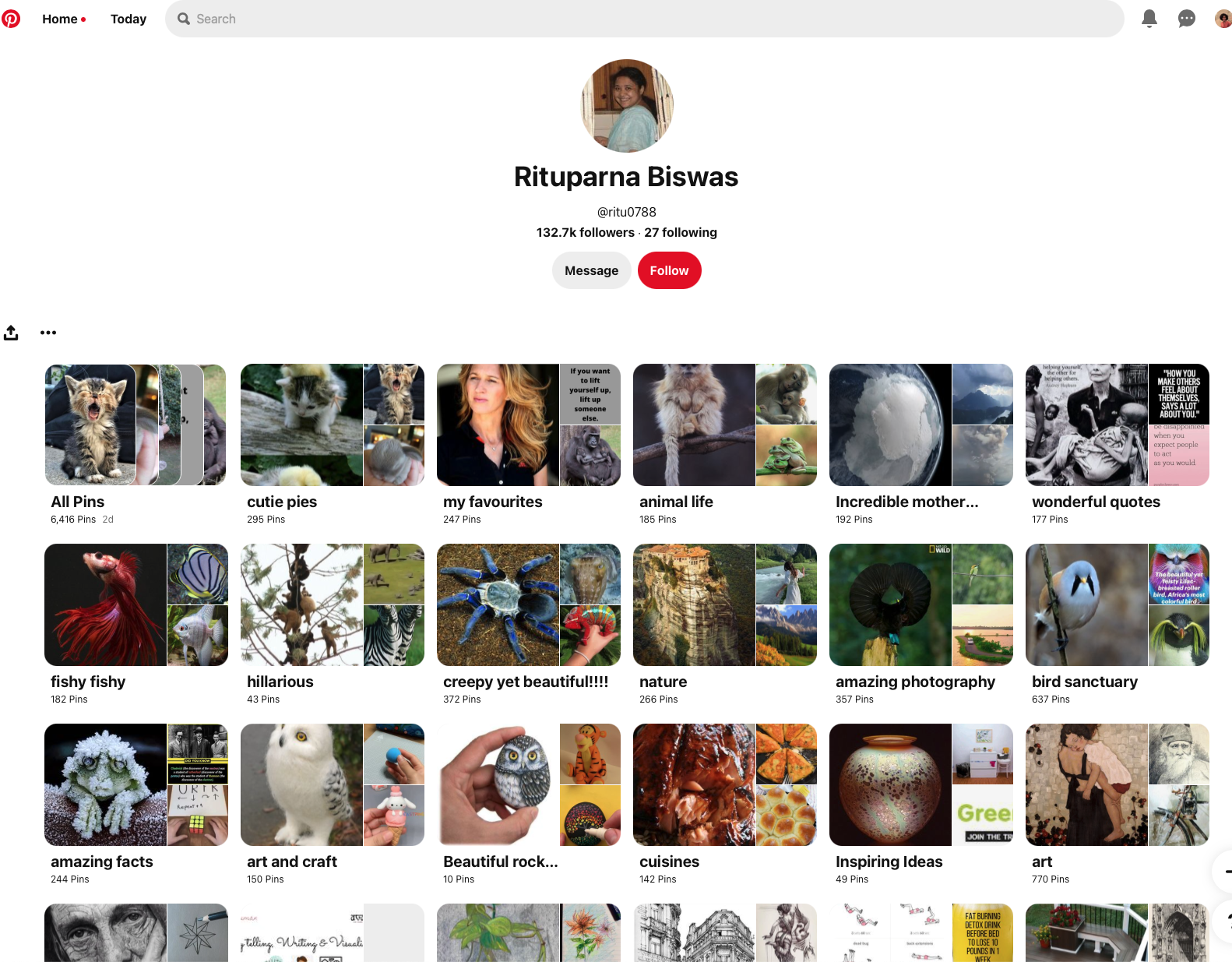
Once a user starts filling their page, the next step is to think about whether the page can serve as a resource for others as well. Once a profile page starts being a resource for others, everything that is added to the page adds value to the network. This starts to compound pretty quickly.
On the other hand, there are sites where the user can’t control the profile page very much at all. For example, on eBay, the original profile page was a purely factual log of interactions and transactions. It was created while you interacted on the site, and you couldn’t curate it. This served a very important function: laying out the buyer’s or seller’s trustworthiness by listing every single transaction and the feedback that came out of it. It’s an enabling page for the whole site (much more so when eBay started at the early stages of the internet). The user didn’t choose how the page was presented to others—it was all controlled by the company, like this:
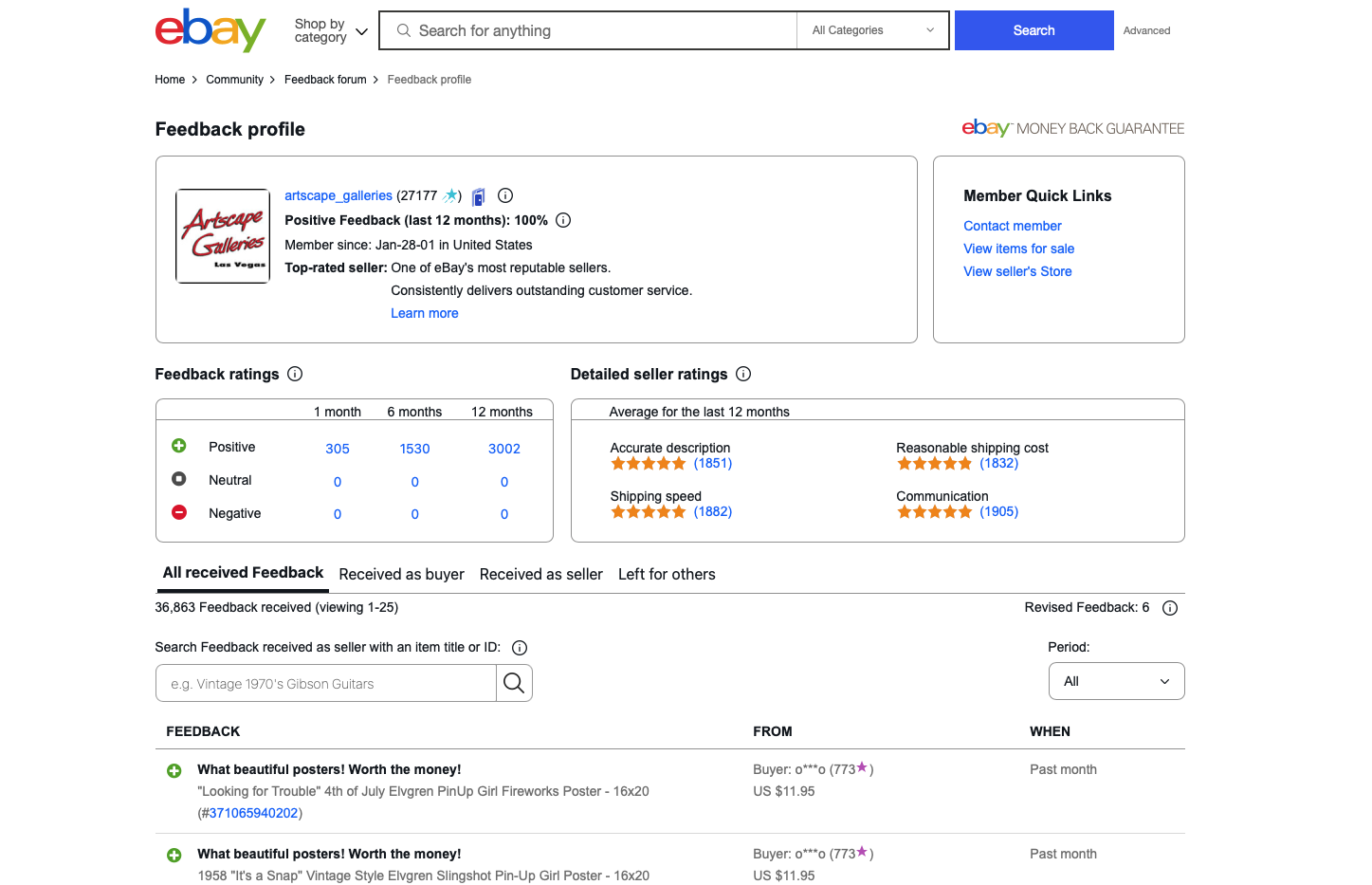
More recently, eBay made this page into a tab and made the main profile page into something that gives the user a little more control over how they come across:
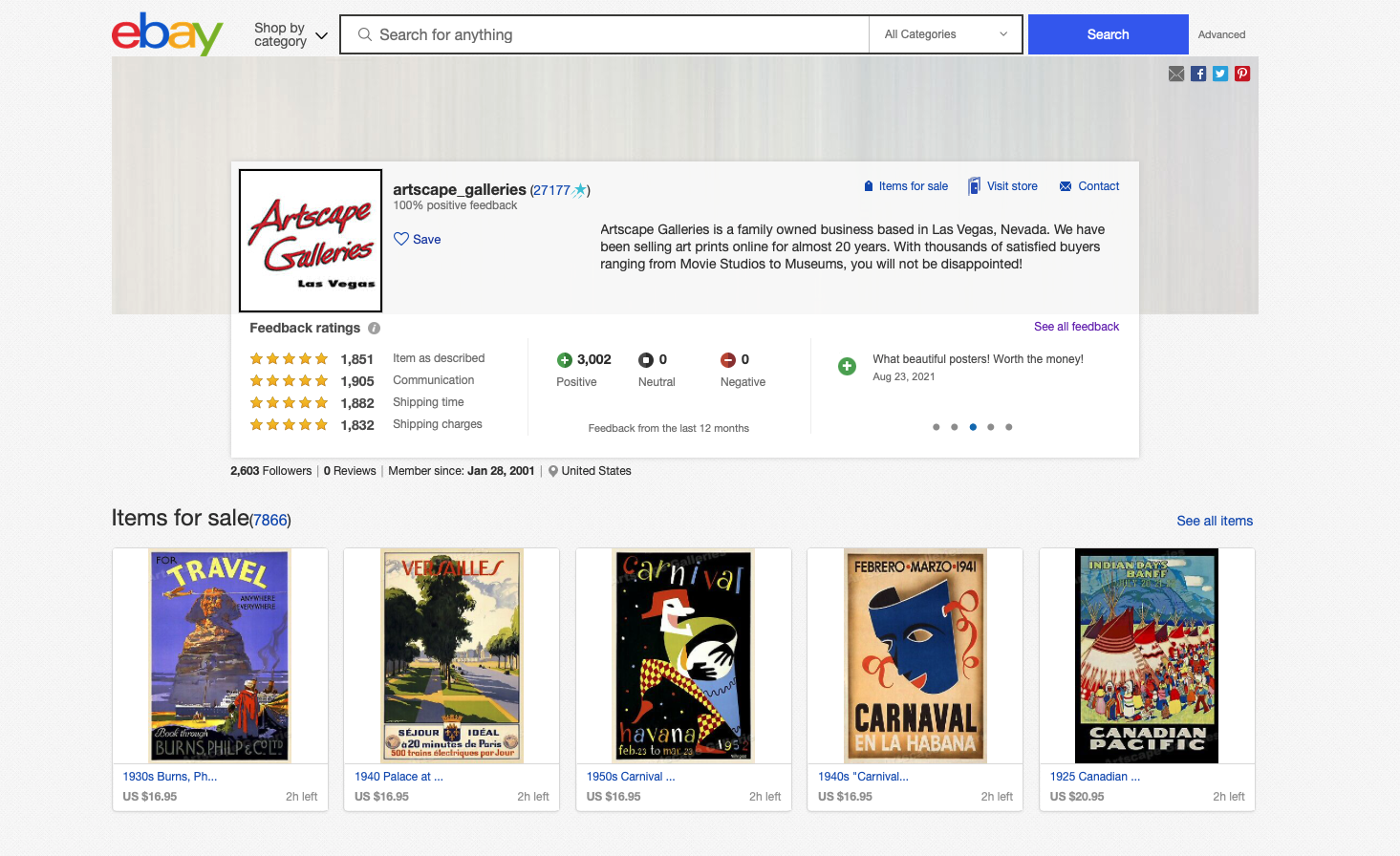
eBay likely made this change in response to its competitor Etsy. The people who built Etsy understood that control has two elements: one is permissioning (what can you do?), which we have spoken about so far. The second is personalization. Personalization leads to an investment of time and effort, and, eventually, it leads to love for the page and the platform.
When a site limits personalization too much, it can start to to feel utilitarian. A segment of sellers viewed eBay as a business. But they viewed Etsy as a place they could infuse with their personality, vision, and dreams and communicate that to their buyers and their seller friends. This allowed a whole new multi-billion dollar business to be built (Etsy is now over half of eBay’s market cap with with only a handful of the eBay categories).
On Wikipedia, users have one profile page where they can describe themselves however they want, and another page called “User Talk” where other users’ comments and questions (e.g. about contributions that you made) are logged and publicly visible.


If you’re building a page which is the spine of the product, it’s important to think through what information you will include on users’ behalf. And what you will allow the user to personalize.
Small decisions can affect user behavior and user emotion, and have large consequences.
2. Should users be anonymous, pseudonymous, or eponymous? Is this a user choice or the company’s choice?
On Twitter, Reddit, Clubhouse etc., you can choose to use your real name or be pseudonymous. The reason I call these pseudonymous is that total anonymity (where the platform doesn’t know who you are) isn’t really possible on a platform that requires a cell phone number since cell phone numbers are usually traceable to a person. On many shopping sites like eBay, you use a “handle” or username, but the platform knows who you are because they require credit card and other information. On Facebook, you’re supposed to be eponymous and use your real name. (Same with Uber and Lyft).
Each of these will lead to types of behavior on the site. When someone is eponymous, most people stay within the bounds of socially acceptable behavior (most of the time). This is positive in terms of hate speech, but it also constraining if the user wants to experiment with creativity or new forms of expression without judgment.
To keep people from pseudonymously impersonating real/famous people, companies can choose to add an extra layer of verification to accounts that get a lot of attention or belong to a celebrity. Eponymous Plus, if you will. A verified account adds benefits to the site by ensuring that the users interacting with them know it’s the actual person and by giving these verified users tools like filters, advanced notifications, and views the plebes cannot access.
Pseudonymous interactions allow more direct, but sometimes harsh or mean, interactions. However, on the positive side, if an artist is exploring a new genre, they may want to experiment pseudonymously. Distancing from real life allows people to interact with others with shared interests without the burden of bringing your “whole self” and everything you have accumulated in your life with you. The site is the final arbiter of excess since they know who the user is and can track them down in cases of illegal activity.
True anonymity can be offered by a platform, but it can lead to a set of behaviors that the company needs to think about. There can be sinister consequences including things like school bullying, predation, and other terrible behavior. For example, Kik became a cesspool that enabled the trading of child porn. The real question is, “What happens if we enable users to do XYZ with no repercussions? And do we want that outcome?”
3. Does every user have the same kind of profile page?
In some communities, some users are faceless by design. For example: Cameo. Cameo is about many, many “normal” individuals who buy cameos from celebrities. The focus is on the celebrities. In Cameo, only the “sellers” have a profile page.
The sellers are famous enough where the people who buy from them are not a validation of the seller’s worth.
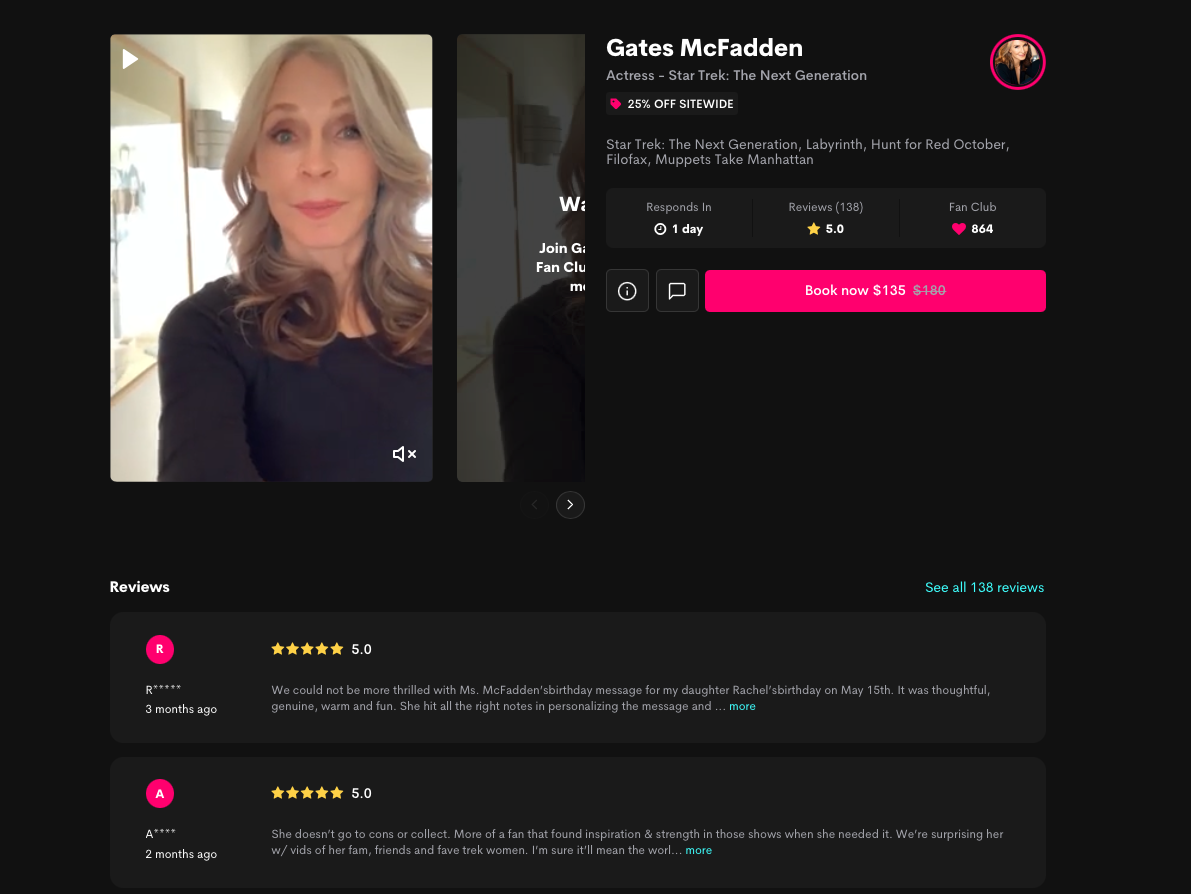
On the Seller side, there are reviews, so you know the quality of the work, but you don’t know and can’t see (rightly, in this case), what the final product was. There’s also no way to contact the buyer and ask them questions. User interaction is deliberately limited.
On a platform like UpWork, buyers and sellers have different, but complementary profile pages with a lot of parallels. And on social networks, all profile pages have the same features.
Can users unlock new badges or capabilities?
Sometimes users may be able to do different things on their profile page. This can be seen as a reward (you have been verified by being a good user on this platform, and so have more leeway), or it might be a function of safety on a marketplace. On eBay, you can earn badges based on how many items you’ve sold. Airbnb has “superhosts” who’ve met certain criteria to be labeled as such. This creates a different category of profile page.
Are there privacy settings, and what do they look like?
When it comes to seeing other users’ information, can users select groups to which they’ll reveal more, and other groups to which they’ll reveal less? Is everything public for “everyone on the web” to see, or are there “friends only” options?
There is usually an inverse correlation between how anonymous a user is and how much control they have over their page.
For example, on Facebook, where the user is pushed towards being “a real person” (let’s not get started on how this is violated), you can choose to use the strongest privacy settings. You have levers of control over who sees what information.
On Reddit, where almost everyone is pseudonymous, you need more sunlight to try your best to reduce bad behavior. So here, you can see everyone’s post history without user-set restrictions. Same with eBay, which, more than Reddit, needs a level of trust for you to interact with an unknown person, in an unknown part of the world.
4. How much interpersonal activity is displayed, if any?
Through the profile page, can you look at interactions with other users? On Clubhouse, the profile is a vehicle to interact at the moment that you want to interact, but there’s not much logging of the history of a person’s participation in rooms.
On Twitter, there is a fair bit of interpersonal activity on the site, but only if the user chooses to have the interactions publicly. They could also choose to have the conversations behind the scenes (in DMs). Clubhouse with their private rooms have also enabled this (which in their case, seems to have hurt app usage1 – wouldn’t you rather see people have spats in public and bitch people out to an audience of several thousand?).
Showing interpersonal activity can enhance trust. On a shopping site, repeat purchases are an indication of a happy buyer, but it could also be an indication of a behind-the-scenes relationship. Sunlight is a great disinfectant in these situations.
There’s a spectrum of the importance of the data. On one end is financial data. On the other is likes of photographs (for example). The more closely the site works with deeply personal data, the more user controls of visibility matter. The Venmo situation (where Joe Biden’s transactions were visible), is a great example of this.
The question du jour is does any of this apply to Web3? I’d say yes. Right now, your profile for a Web3 community is distributed between your wallet and your Discord presence(s). This feels pretty basic — if the whole point of many Web3 apps is community, it should be much stronger. And it will be. Tools will develop differently, but the principles outlined here are likely to remain valid.
All of these decisions are crucial because the profile page can become the centerpiece of network effects.
Why? Well, there are two aspects to it:
First — you can’t have a network without nodes in the network. Users are these nodes, and the profile page is how you can identify and locate them. It’s a way, potentially, for users to get introduced to each other and, in doing that, come together into a true network.
If you’re building a platform and aiming to develop a community there, this is especially important. The profile page might be the most essential part of that. It’s central to community as a way for people to understand who another person is and learn what they’re about before and after making a connection.
Second — network effects will start to take off when the profile page itself becomes an asset worth owning. For example: it’s advantageous for a business to own its Google Business and Yelp pages, because people go to those platforms for information about businesses and companies. Even if the business owner doesn’t care too much about emerging websites, at some point, it becomes impossible to ignore the value of the page as an asset. Similarly, if you’re setting up any kind of personal or brand web presence, you want to own the same handle on each major platform (Shripriya.com, @Shripriya, medium.com/shripriya, etc). Even if I’m not active on one of these platforms, claiming my “location in the network,” via a profile page, is valuable to me.
Think a few years down the road. As your company grows, what will motivate someone to take ownership of their profile page and invest in it?
- Do they make money?
- Do they make friends?
- Do they find shared interests?
- Do they learn about something they care about?
- Are they entertained?
- Is there something in a user’s profile page that adds value to every other user (or to one other user)?
- Is there a way for one user’s efforts to reduce the effort another user needs to put in to achieve a goal?
These are the situations in which value is created, and that value is attached to a profile page which represents the user’s place in the network. The more obvious this value is to users, the easier it becomes to nudge users onto your platform and keep them there.
TL;DR — these are the key questions as you build this important platform component:
- What can the user control about her profile page? What does the company control? What can other people do via her profile page?
- Should users be anonymous, pseudonymous, or eponymous? Is this a user choice or the company’s choice?
- Does every user have the same kind of profile page?
- *How much interpersonal activity is displayed?
This is crucial if you want network effects, for two main reasons:
- 1. You can’t have a network without nodes in the network. A profile page is how you create and identify those nodes.
- 2. Network effects will start to take off when the profile page itself becomes an asset worth owning.
Many thanks to Andrew Parker and Sara Eshelman for reading drafts and sharing thoughts on this post.
I do not have access to any Clubhouse data, this is conjecture ↩
